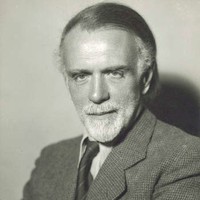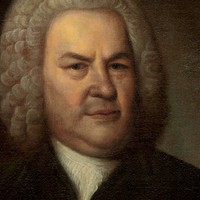Bach’s Double Violin Concerto



Not long after George Frideric Handel became Kapellmeister in 1710 to George Ludwig, Elector of Hanover, those two Germans would find themselves making history in England. Handel, for his part, revolutionized the opera scene with Rinaldo from 1711, the first Italian opera written expressly for London. Meanwhile George, by virtue of the 1689 Bill of Rights that barred Catholic monarchs, became the unlikely heir to the British throne, as the great-grandson of King James I and the closest living Protestant relative to Queen Anne when she died in 1714.
George fired Handel from the Hanover position in 1713, leading to a brief falling out, but the two reconciled after George’s coronation, and Handel became a trusted source of music for the royal court. In 1717, when a conflict with his liberal-minded son (the future George II) left the king in need of some good public relations, he organized an outing on the River Thames and asked Handel to provide orchestral entertainment. On July 17, 1717, the river filled with boats, including a barge loaded with some fifty musicians. The whole flotilla rode the tide upriver to Chelsea, stopped for a supper, and then returned to Whitehall, with Handel’s new Water Music sounding all the while.
The suite heard here, published in 1733 as Mr. Handel’s Water Piece, traded on the enduring popularity of Water Music by arranging one of its overtures for trumpet and strings. The rest of the music is a mish-mash, including a final march adapted from the 1730 opera Partenope, and most likely Handel was not involved in the arrangement of any of it. Handel knew better than anyone how to squeeze maximum profit out of a good bit of music (his or even a competitor’s), and his publisher cranked out reams of music without any of the guardrails around intellectual property and provenance that we would expect today. The result is a very practical and idiomatic showpiece for trumpet, highlighting the bright and clear upper range of the instrument where it could play flowing melodies even in those days before valves made it easier to access all available pitches.
Aaron Grad ©2021


Growing up in the small Austrian city of Salzburg, Wolfgang Amadeus Mozart forged a lasting friendship with Joseph Leutgeb, a longtime horn player in the local archbishop’s court orchestra. When Leutgeb moved to Vienna in 1777, Mozart’s father Leopold lent him some money; during the financial struggles that clouded the end of Mozart’s life, Leutgeb returned the favor.
Their bond was cemented in a series of works that Mozart wrote after his own ambitious move to Vienna in 1781, starting the next year with the Horn Quintet in E-flat Major (K. 407). Whether driven by Mozart’s love of playing viola or sonic considerations to avoid crowding out the horn, the quintet features an unusual scoring, with a single violin but two violas. The nature of the valveless horn from that period made it challenging to play smooth melodic lines, but Leutgeb was a master of the various lip and hand maneuvers that made it possible to fill in the missing notes, as demonstrated by the slurred melodies that Mozart wrote in the first movement.
A review in Paris once singled out Leutgeb’s ability to “sing an adagio as perfectly as the most mellow, interesting and accurate voice,” a talent that Mozart put to use in the tender Andante. Mozart’s own virtuosity as a composer comes through in the closing Rondo, including a canon that tosses the main theme through all five voices in turn before a final explosion of arpeggios.
Aaron Grad ©2025

Johann Sebastian Bach probably composed his Concerto for Two Violins around 1730, not long after he agreed to lead Leipzig’s Collegium Musicum. This talented amateur group, founded in 1702 by a young Telemann, provided an outlet for Bach to play instrumental music in a sociable atmosphere, away from the weekly grind of his church duties. Many of the works that Bach brought to the Collegium were arrangements of works from an earlier period when he worked a secular job in Cöthen, so it is possible that the Double Violin Concerto had its origins in some earlier source material.
Along with Bach’s two extant Violin Concertos (also prepared for the Collegium), the Double Concerto borrows from a style popularized several decades earlier in northern Italy by Vivaldi and his contemporaries. Following the Vivaldi model, a ritornello structure in the first movement sets up a strong theme in the accompanying ensemble that makes its presence felt with every return. The added magic in this movement is the sophisticated counterpoint, drawing on the fugue techniques that Bach had advanced far beyond his Italian colleagues. Counterpoint is a crucial feature of the slow movement as well, with the two soloists weaving a patient fugue over an accompaniment that has just enough of a dancing lilt (and a tempo that Bach made sure to mark as “not too slow”) to propel the melodies forward. The contrapuntal technique of canon — with one voice following close after another in an echo effect — makes for a particularly vibrant finale.
Aaron Grad ©2022
Get driving directions and find nearby parking.
Find dining options close to the venue.
View seating charts to find out where you'll be seating.
Get driving directions and find nearby parking.
Find dining options close to the venue.
View seating charts to find out where you'll be seating.
